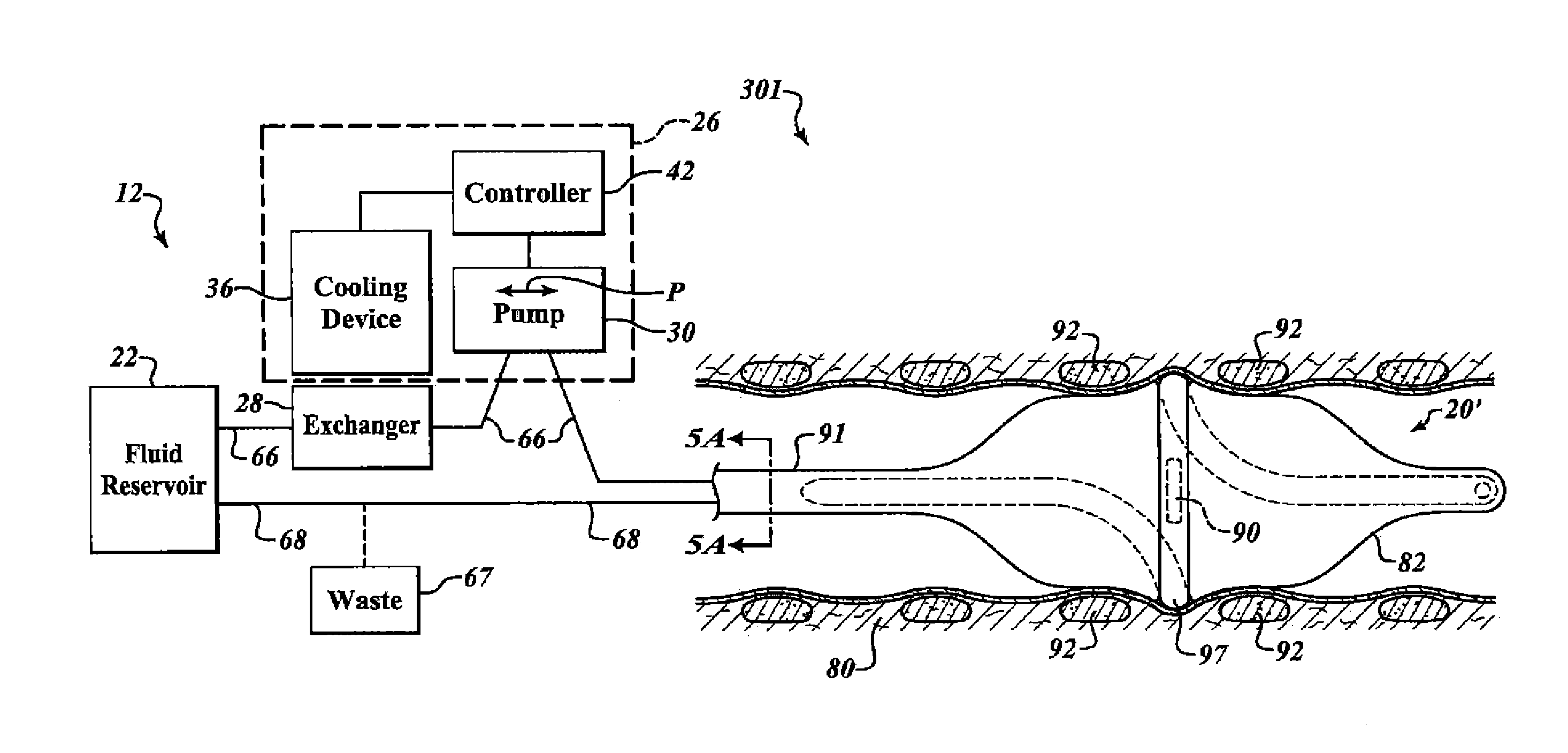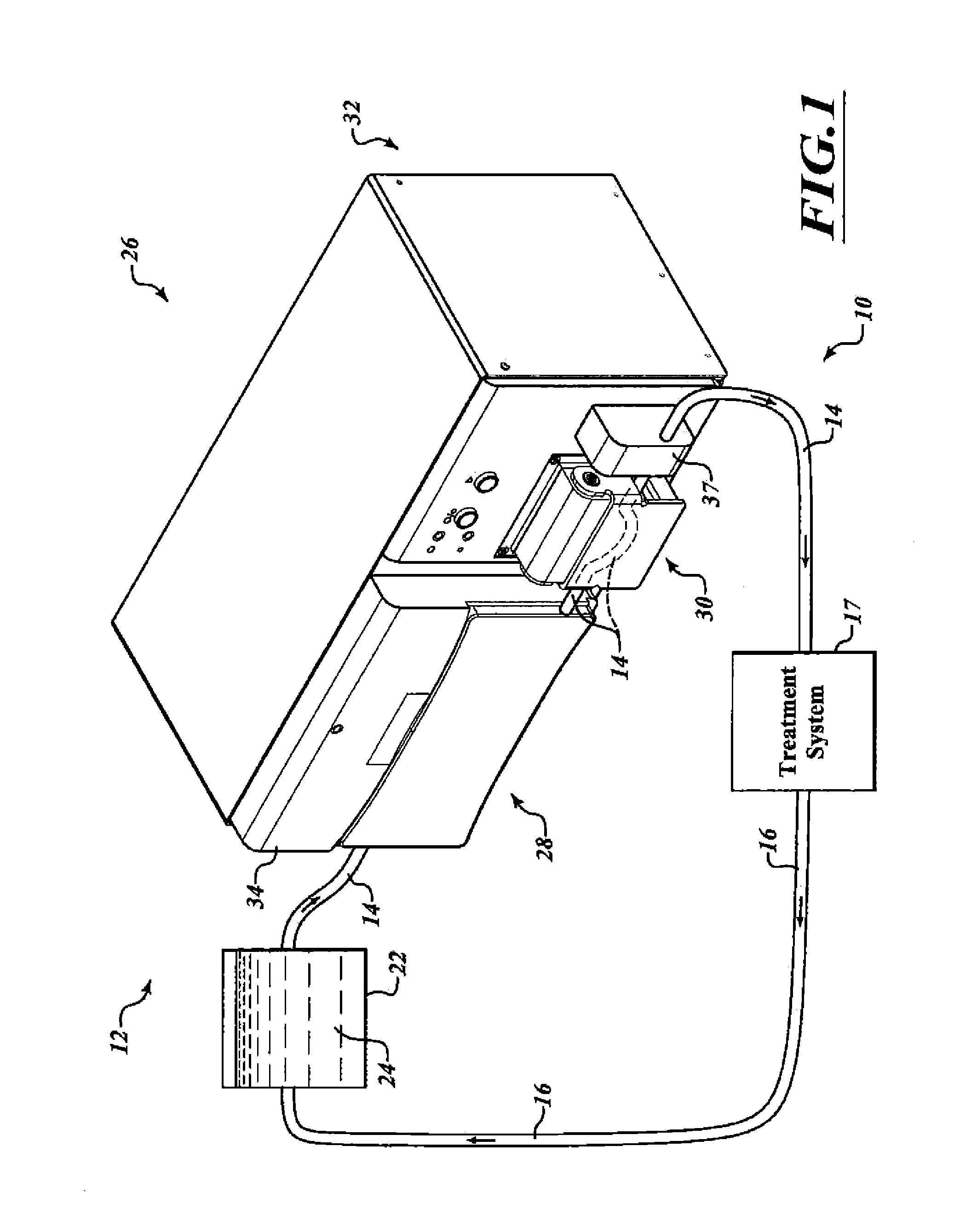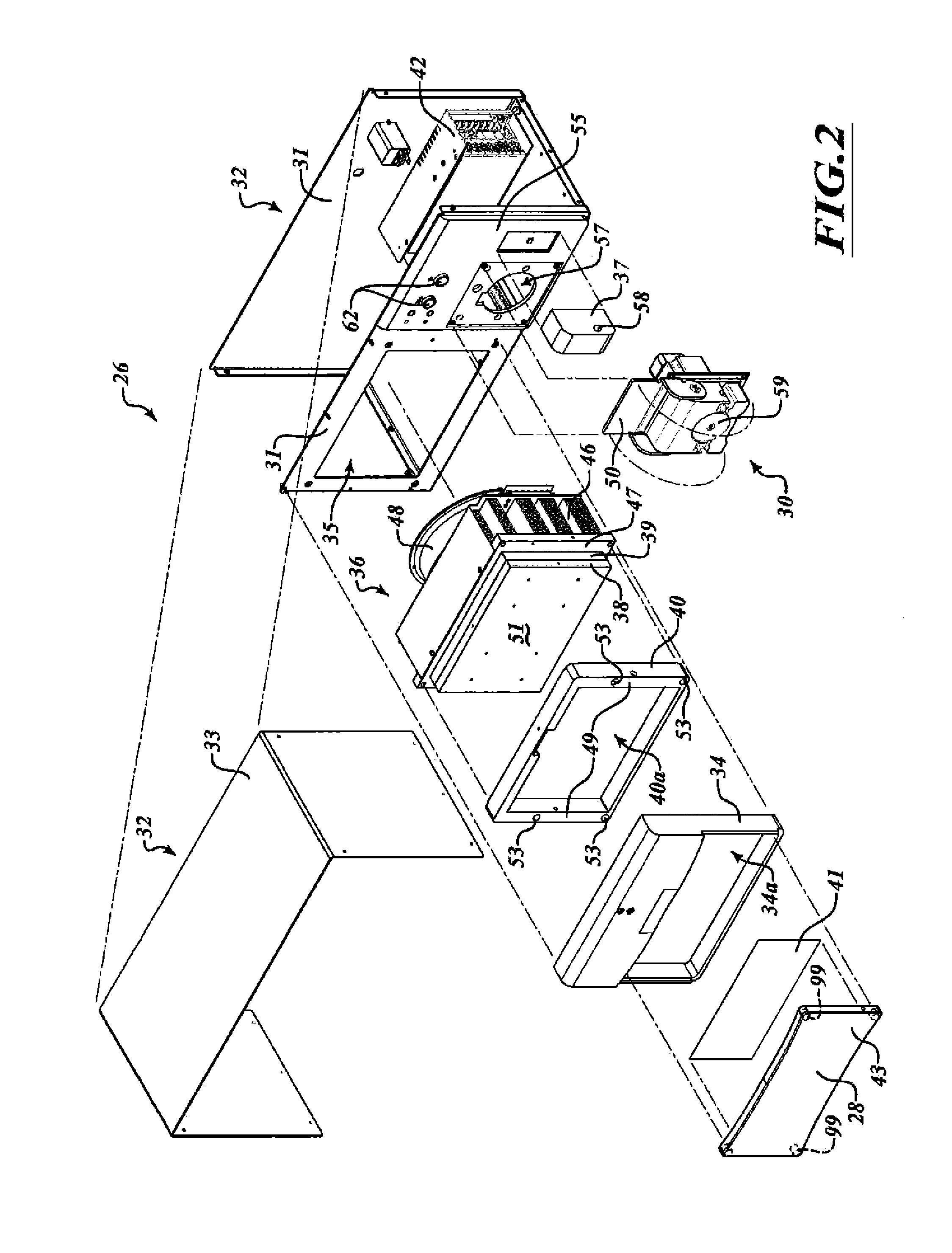Fluid delivery system and method for treatment
a technology of fluid delivery system and fluid, applied in the field of fluid delivery system and treatment, can solve the problems of difficulty in maintaining a desired temperature (or temperature range), difficulty in maintaining a desired temperature, and conventional liquid coolant supply system failure to provide a sufficiently compact and efficient closed loop system, etc., to achieve the effect of effective and efficient heat transfer, improve heat transfer, and limited desirable heat transfer of fluids
- Summary
- Abstract
- Description
- Claims
- Application Information
AI Technical Summary
Benefits of technology
Problems solved by technology
Method used
Image
Examples
Embodiment Construction
[0059]According to the present disclosure, FIGS. 1-7B illustrate a first aspect of a treatment system having a fluid cooling supply system for treatment of a patient, and FIGS. 8-13C illustrate a second aspect of a treatment system having a fluid cooling supply system for treatment of a patient. It will be understood that various configurations described with reference to the first and second aspects may be combined into further configurations and aspects, which may be further discussed in the present disclosure regarding particular configurations.
[0060]FIGS. 1 and 2 illustrate a system 10 that includes a fluid cooling supply system 12 coupled to a treatment system 17. FIG. 2 shows a partially exploded view of certain components of the fluid cooling supply system 12 of FIG. 1.
[0061]In the example in FIG. 1, the fluid cooling supply system 12 is coupled to the treatment system 17. The treatment system 17 may be positionable at least partially in a patient (FIG. 4). The fluid cooling ...
PUM
 Login to View More
Login to View More Abstract
Description
Claims
Application Information
 Login to View More
Login to View More - R&D
- Intellectual Property
- Life Sciences
- Materials
- Tech Scout
- Unparalleled Data Quality
- Higher Quality Content
- 60% Fewer Hallucinations
Browse by: Latest US Patents, China's latest patents, Technical Efficacy Thesaurus, Application Domain, Technology Topic, Popular Technical Reports.
© 2025 PatSnap. All rights reserved.Legal|Privacy policy|Modern Slavery Act Transparency Statement|Sitemap|About US| Contact US: help@patsnap.com



